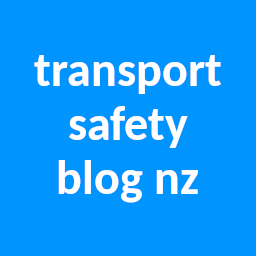An article in Stuff’s Wellington newspaper, The Post, announced today that the government’s 2023 budget will including funding for 18 hybrid trains for the Kapiti and Wairarapa line services in the lower North Island. These trains run on the Wairarapa Line from Wellington to Masterton (excluding the Wellington commuter network) (The Wairarapa Connection services) and on the North Island Main Trunk Line between Wellington and Palmerston North (The Capital Connection services). The expectation is that the service upgrades will provide for up to 1.5 million passenger trips annually, which includes providing at least four daily services to stations on the NIMT; there is no particular statement about the service frequency on the WL so far. The existing Capital Connection service began in 1991 as the Cityrail Express and was transferred to Tranz Metro in 1995. When Tranz Scenic was privatised in 2001, it took over the operation of the service, moving it from management as a local service to an interurban service. It came under pressure during the term of the last National Government due to their rundown of the rail network resulting in subsidies being obtained from Greater Wellington Regional Council and Horizons Regional Council to continue the operation of the services from 2015 to 2018. There were other previous interurban services operated before the Capital Connection services but no information is currently to hand about these. The Capital Connection was operated with NZ built 1930s era 56 foot steel sheathed cars until 1999, when they were replaced by refurbished second hand imported British Rail Mark 2 carriages (S Class). These are to be replaced by refurbished Auckland Transport SA class carriages in 2023 (reclassified SR), which are also BR Mk2 cars.
The Wairarapa Connection services are based on previous services dating back to the 1960s according to Wikipedia, and like the Palmerston North services there is a long history going back to the 19th century of passenger train services in the region. The 88 seater railcars were replaced by 1930s era NZ built 56 foot carriages on the services in 1964, so this is the date at which the current form of the services was first established – locomotive hauled carriage sets, but other similar sets had operated previously on the Wairarapa route. They were replaced for a short period in the 1980s by the AC articulated cars that were converted from former 88 seat railcars and then another set of 56 foot cars were brought in to operate the trains. The service continued to be operated by these types of carriages until 2007 when Tranz Scenic succeeded in having them removed as it considered that the old 56 foot carriages, which have wooden framing that failed safety expectations for modern stock, should be withdrawn as unsuitable for continued operation. The services continued with SW class carriages, which are refurbished ex-BR Mark II stock.
There have been a number of proposals to upgrade the services. The recent ones include GWRC’s proposal in 2019 to put 15 bimode multiple units on the services, estimated to cost $415 million at the time. This essentially means the same type of train that is being sought in the present upgrade – assumed to be electro-diesels, trains that can be powered both from overhead lines and an onboard engine. They will use overhead line power within the Wellington suburban network (1600 VDC) and “alternative” power (presumed to be diesel at this time) outside it. It is not clear how the option being sought would have compared with the option of extending the 1600 VDC overhead lines from Waikanae to Palmerston North or Upper Hutt to Masterton would have compared in costs to the current option. The 2019 case stated there was a BCR (benefit to cost ratio) estimated to be in the range from 1.3 to 2.6. The 2019 proposal was rejected in the Government’s 2020 budget.
The press release which was claimed to be exclusively revealed by Stuff has been released this morning on the Beehive website. Both omit the expected cost of the proposals, but the government is obliged to reveal this cost when the Budget is released next month. There is already an existing project underway to upgrade the Wairarapa Line, including safety improvements on most of the level crossings in the region; this will be looked at in a separate post on this blog. The non-publication of the cost to date means it can’t be considered a completely credible proposal, since if the government doesn’t reveal a figure in the Budget then it can’t be proven to have committed to the services.
